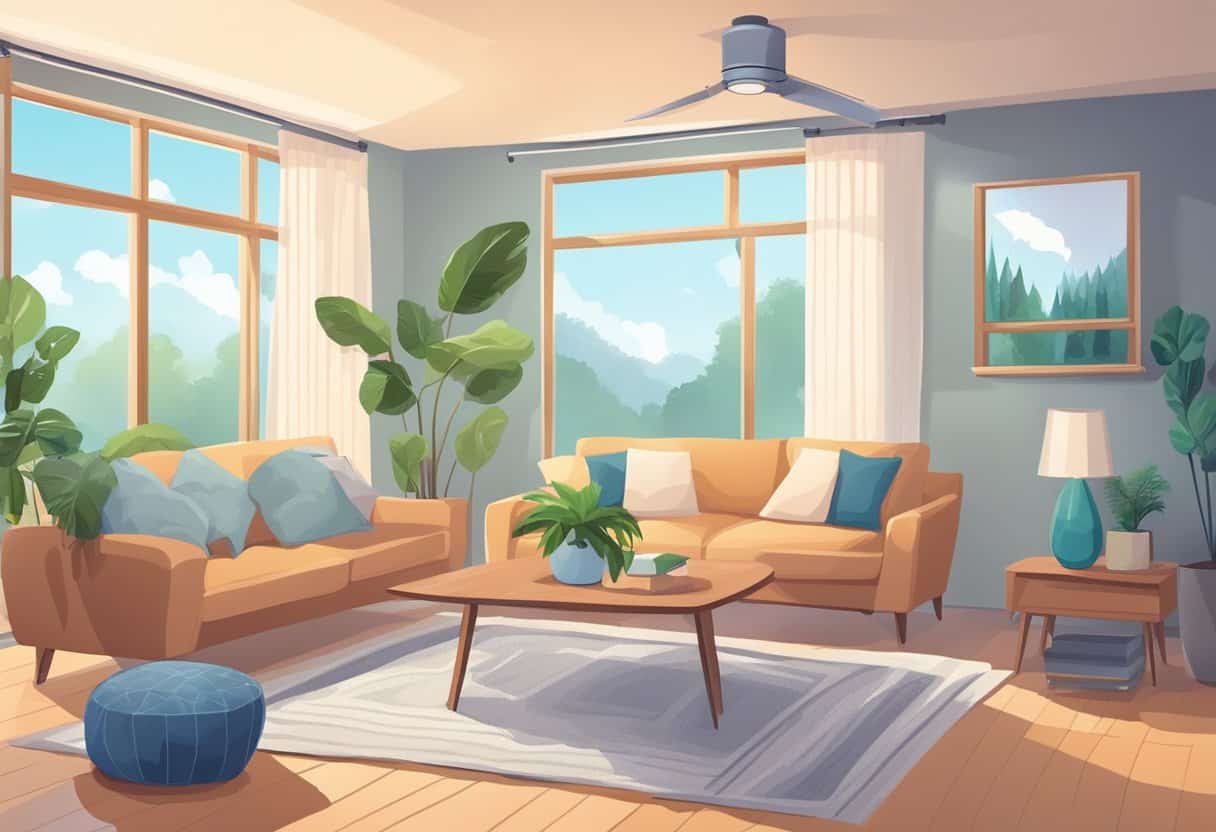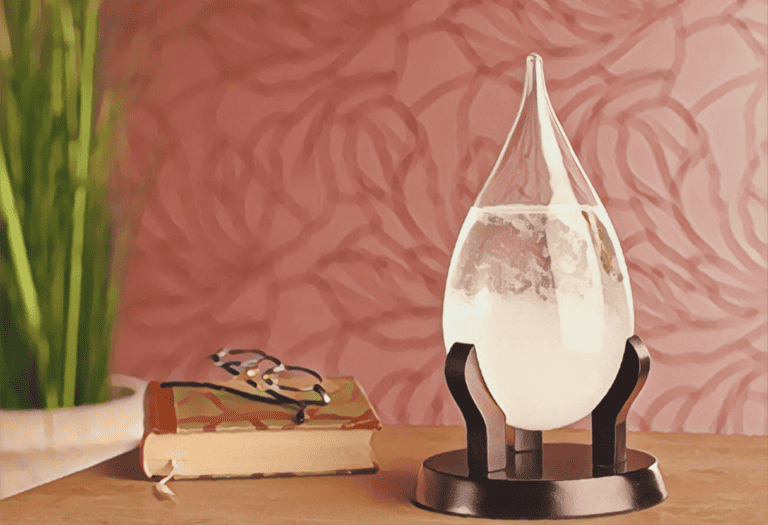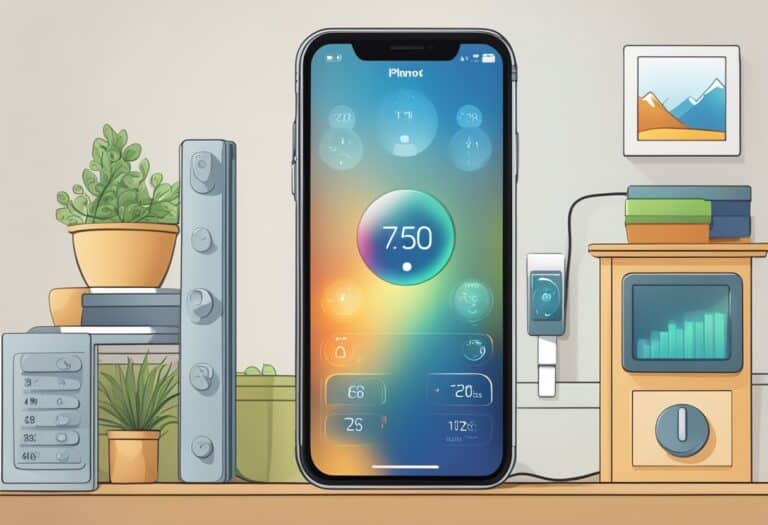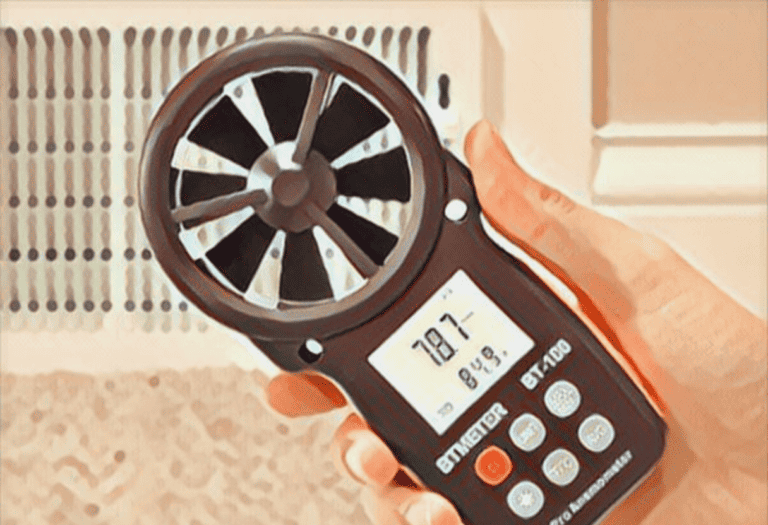Maintaining the ideal indoor humidity during summer is crucial for both your health and comfort.
As temperatures rise, the air’s capacity to hold moisture increases, which can lead to an uncomfortable indoor environment if humidity levels are not properly managed. For most people, an indoor humidity level ranging from 40% to 60% strikes the perfect balance between comfort and health, though preferences can vary slightly based on personal comfort and regional climate.
In the heart of summer, managing your indoor humidity becomes particularly important as high humidity can exacerbate feelings of heat, making it seem hotter than it actually is. Conversely, air that is too dry can lead to respiratory discomfort and damage wooden furniture or musical instruments.
By achieving optimal humidity levels, you can enhance the air quality of your home, prevent condensation and mold growth, and ensure a comfortable living space.
The ideal indoor humidity level for summer is 40-60%, balancing comfort and health while preventing mold and ensuring a pleasant living space.
Understanding Indoor Humidity
Maintaining the correct indoor humidity levels is crucial for your comfort and health. It is especially important to monitor it during the summer when the air can become excessively moist.
Role of Temperature and Relative Humidity
Temperature and relative humidity are interconnected. Indoor humidity refers to the amount of water vapor present in the air inside a building. Relative humidity (RH) is the percentage of moisture the air holds relative to its maximum capacity at a specific temperature. In summer, when temperatures rise, the air can hold more moisture, which may increase your indoor relative humidity. Maintaining a relative humidity between 30% and 50% is generally recommended to ensure comfort and prevent problems associated with too much or too little moisture.
Measuring Indoor Humidity: Tools and Techniques
To measure your indoor humidity, you have a few options. The most common and accessible tool is a hygrometer. This device gives a readout of the RH percentage and, often, the temperature. Hygrometers come in analog or digital varieties, and some of the more advanced models can be connected to smart home systems, allowing continuous monitoring and adjustments to your indoor air systems.
- Analog hygrometers are typically less expensive but require manual calibration to ensure accuracy.
- Digital hygrometers, on the other hand, tend to provide quicker and more precise readings and may feature additional functions such as recording minimum and maximum levels.
Effects of High and Low Indoor Humidity
High indoor humidity, common in the summer, can lead to discomfort, sleep disturbances, and mold growth. On the other hand, low indoor relative humidity can cause dry skin, respiratory issues, and worsen allergy symptoms. Both extremes can damage woodwork and electronics.
- High Humidity signs: Clammy air, foggy windows, damp odors
- Low Humidity signs: Static shocks, dry skin and eyes, cracking wood
In short, you should actively manage your indoor relative humidity during summer to maintain a comfortable and healthful environment. Using hygrometers will allow you to measure current levels and adjust indoor air systems accordingly.
Maintaining Optimal Humidity in Summer
In summer, the battle against high indoor humidity levels is critical to maintain comfort and protect your home from mold and moisture damage. Achieving the ideal summer indoor humidity level—which typically ranges from 40% to 60%—ensures a comfortable and healthy living environment.
Best Practices for Humidity Control
Monitor Your Humidity: Invest in a hygrometer to continually check your indoor humidity levels. Adjusting your lifestyle habits, such as taking shorter showers and air-drying clothes outdoors, can help reduce indoor humidity.
Use Your Air Conditioner: Running your air conditioner doesn’t just cool your home; it also removes excess moisture. Ensure your HVAC systems are regularly serviced for peak performance.
Utilizing Dehumidifiers and Humidifiers
-
Dehumidifiers: These are essential in areas with high levels of humidity. Place a dehumidifier in moisture-prone areas like the basement to help maintain comfortable humidity levels.
-
Humidifiers: Though less common in summer, if your home is too dry, a humidifier can add the necessary moisture back into the air.
Ventilation and Air Circulation Strategies
-
Exhaust Fans: Use exhaust fans in your kitchen and bathroom to expel hot, moist air and aid in air circulation.
-
Smart Thermostat: A smart thermostat can optimize your home climate by controlling your air conditioning and ventilation systems effectively, helping to maintain an ideal summer indoor humidity level.
Remember, maintaining optimal humidity is not just for your comfort—it’s also about safeguarding your home and health.
Health and Comfort Considerations

When creating a comfortable and healthy indoor environment during summer months, you should pay particularly close attention to maintaining the ideal humidity levels. This balance is crucial to preventing health issues like allergies and to ensure a generally comfortable living space.
Humidity’s Impact on Health
High levels of humidity can lead to the growth of mold and dust mites, which are common triggers for allergy and asthma symptoms. If you are experiencing more frequent breathing problems or heightened allergy symptoms, it could be a sign that your indoor humidity is too high. Conversely, low humidity levels can cause dry skin and sinus issues, as the lack of moisture in the air can dry out the mucous membranes in your respiratory system, making you more susceptible to infections.
- Recommended Humidity Levels:
- Prevent mold/mites: Keep indoor humidity below 50%
- Avoid dry skin/sinuses: Maintain indoor humidity above 30%
Comfort and Indoor Air Quality
In terms of comfort, your body is likely to feel cooler in a low-humidity environment because sweat evaporates more quickly, cooling your skin. However, if the air is too dry, you might find that your skin becomes irritated and that dry skin becomes a nuisance. When discussing air quality, a moderate humidity level helps to keep the air comfortable to breathe and can reduce the presence of harmful bacteria and viruses which tend to thrive either in very dry or very moist conditions.
- Indoor Air Quality Tips:
- To minimize the risk of bacteria: Use a dehumidifier in high humidity conditions
- For optimal breathing comfort: Use a humidifier when the air feels too dry
By monitoring and adjusting the humidity in your home, you can ensure a better balance between health and comfort.
Home Environment and Humidity Effects
Maintaining an optimal humidity level in your home during summer is vital to protect both the structure of your home and the health of your houseplants. The appropriate humidity level can prevent damage to building materials and furnishings while also providing the right environment for plants to thrive.
Protecting Building Materials and Furnishings
Your home’s building materials and furnishings can deteriorate if exposed to high humidity levels. Wood flooring and furniture are particularly susceptible to warping and swelling in these conditions. To mitigate these issues, aim for a relative humidity (RH) between 30% and 50% indoors. This range helps preserve the integrity of wood elements and prevents the peeling of wallpaper. Keep a close watch on windows and doors, as condensation can lead to mildew and mold growth, especially during summer’s higher temperatures.
- Ventilation: Ensure adequate ventilation, particularly in areas like the laundry room, where moisture tends to accumulate.
- Insulation: Check that your home is properly insulated to maintain stable indoor humidity levels.
- Dehumidifiers: Consider using dehumidifiers in rooms that feel damp or show signs of moisture.
Houseplants and Humidity Balance
Houseplants can be both beneficial and sensitive to indoor humidity levels. During summer when indoor air tends to be drier, plants like the Boston fern and English ivy can help balance indoor humidity by releasing moisture during transpiration. Conversely, these plants require sufficient humidity to remain healthy, further emphasizing the importance of a balanced indoor climate.
- Placement: Position your houseplants away from drafty windows and doors to ensure they are not subjected to dry air.
- Misting: Occasionally mist your houseplants to increase humidity, particularly for those that thrive in more tropical conditions.
- Water Trays: Place water trays near your plants to help increase the surrounding humidity, especially beneficial in hot and dry summer months.
By attentively managing your home’s humidity, you protect its structural elements and create a conducive environment for your houseplants, ultimately adding to the comfort and sustainability of your living space.
Frequently Asked Questions
In this section, discover how to optimally manage indoor humidity during the hot summer months to ensure comfort in your home.
What is the recommended humidity level inside a home during the summer months?
The ideal indoor humidity level for summer is typically between 30-50%. This range helps to keep the air comfortable and avoid problems associated with excessive moisture, such as mold growth.
At what humidity level does indoor air become uncomfortable in the summer?
Humidity above 60% tends to make indoor air feel uncomfortably sticky. It can also exacerbate allergies and sleep-related issues.
What are the best practices for maintaining ideal humidity levels for sleeping in hot weather?
To maintain comfortable humidity levels for sleeping in hot weather, use air conditioning or fans to circulate air, and consider a dehumidifier to extract excess moisture.
How can one effectively lower excessive indoor humidity in the summer?
Lowering excessive indoor humidity can be achieved by using dehumidifiers, ensuring proper ventilation, and by using exhaust fans in areas like kitchens and bathrooms where moisture accumulates.
Is maintaining a humidity level of 50% inside the house too high during summer?
Maintaining a humidity level of 50% is not too high for summer; it is at the upper end of the recommended range and can provide a balance between comfort and preventing mold growth.
Why is it important to adjust indoor humidity levels when transitioning from winter to summer?
Adjusting indoor humidity levels between seasons is important because outdoor humidity levels change. Proper adjustment ensures indoor air quality and comfort are maintained year-round.







